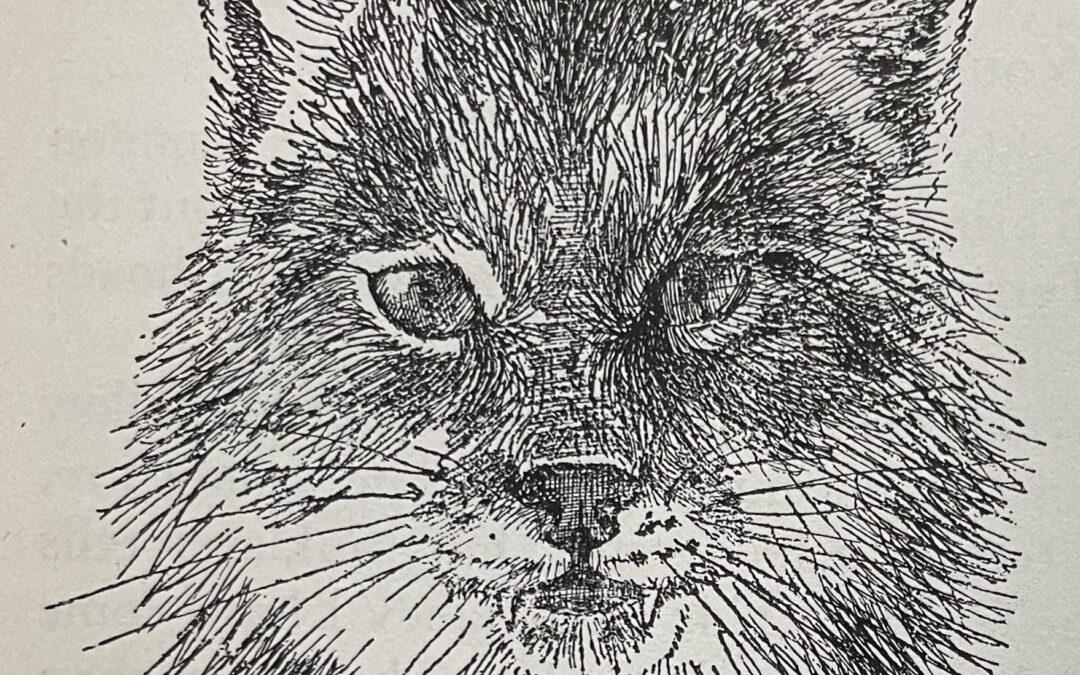Lynx by Ernest Thompson Seton
This is one in an ongoing series of nature essays from Lives of Game Animals (1925-1928) by Ernest Thompson Seton.
The Harmless Lynx/Vol. I pg. 198
“It is nearly 20 years since I killed any wild animal, and that was a lynx. This is the colourless record as it appears in my ‘Arctic Prairies.’
‘Athabaska River, May 19, 1907: At night we reached the Indian Village of Pelican Portage, and landed by climbing over huge blocks of ice that were piled along the shore. The adult male inhabitants came down to our camp, so that the village was deserted, except for the children and a few women.
“As I walked down the crooked trail along which straggle the cabins, I saw something white in a tree at the far end. Supposing it to be a White-rabbit in a snare, I went near and found, to my surprise, first that it was a dead House-cat, a rare species here; second, under it, eyeing it and me alternately, was a hungry-looking Lynx. I had a camera, but it was near sundown and in the woods, so it was impossible to get a picture. Therefore I went back to the boat and returned with a gun. There was the Lynx still prowling, but now farther from the village. I did not believe he would have harmed the children, but a Lynx is game. I fired, and he fell without a quiver or a gasp. This was the first time I had used a gun in many years, and was the only time on the trip. I felt rather guilty, but the carcass was a godsend to two old Indians were sickening on a long diet of salt pork, and that Lynx furnished them tender meat for three days afterward, while its skin and skull went to the American Museum.’
It sounds all right and clear, but to this day I cannot forget the kitten-like wonder of those big, mild eyes, turned on me as I fired. He fell without a sound, and when I came up, he still gazed without a moan, without a sign of resentment, with nothing but pained surprise, which my conscience translated into: ‘So this is your love of the wild things.’”

